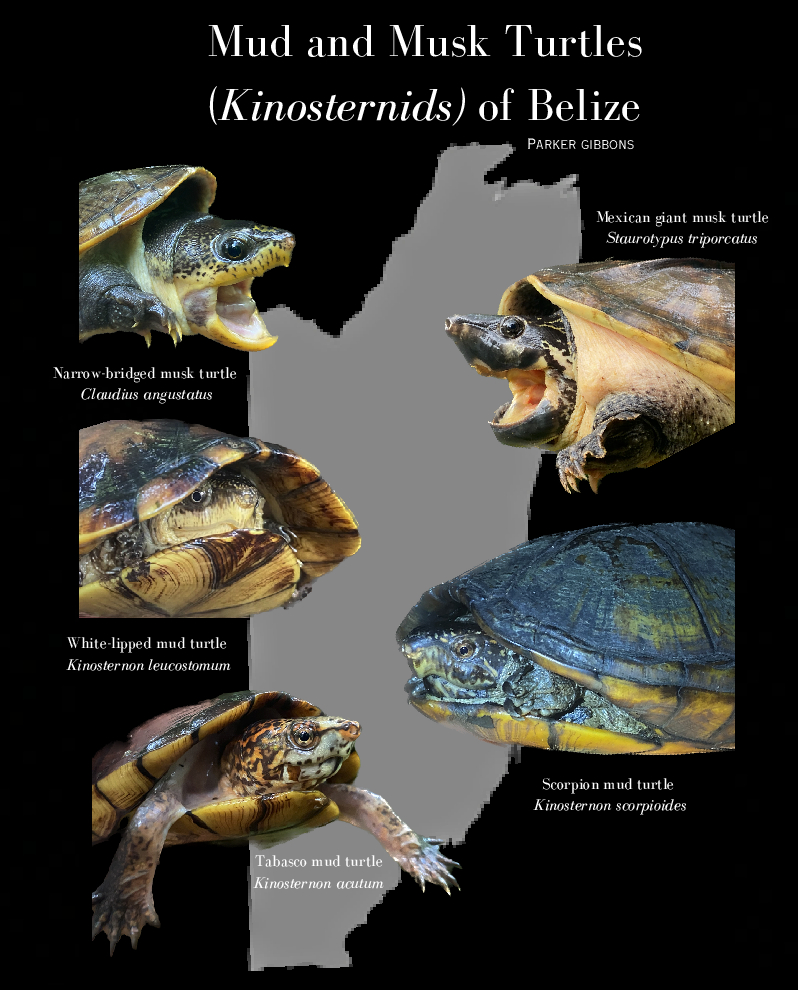Belize’s Mud Turtles
Belize is lucky to be home to both mud and musk turtles belonging to the Kinosternidae family. In science, a family is a group of related species that share similar traits. These traits can include their habitat or diet. The shared characteristics among these species indicate their close relationship, just like how family members at home often share common features and habits. Three (3) mud turtles can be found in the slow-moving waters of Belize.
They are relatively small turtles; the largest of the three is commonly known as the White-lipped mud turtle or scientifically known as Kinosternon leucostomum. They can grow up to seven (7) inches in length. The middle guy is commonly known as Red-cheeked mud turtle and scientifically known as Kinosternon scorpioides. They can grow up to six (6) inches. The smallest of the three is commonly known as the Tabasco mud turtle and scientifically known as Kinosternon acutum. They only grow up to five (5) inches.
Being mud turtles, they are similar in many ways. They are all omnivorous which means they eat both animal and plant material. Mud turtles can consume anything from fish to aquatic plants. They all possess hinges located on both ends of the plastron which allow them to close their shells tightly around their bodies. This unique feature helps them protect themselves from predators such as raccoons, herons, tapirs, and even other turtles. They don’t sit in the sun to bask like other turtles; instead they love to be buried under dead leaves or mud at the bottom of water bodies which is why they get the name “mud turtles”. Like many other turtles, mud turtles aestivate during the dry season when it is too hot; aestivation is similar to hibernation in cold climates. During this long period of rest they conserve energy and stay safe from extreme heat. They resurface when the temperatures become cooler.
Now let’s look at what makes each one unique and how one may identify them.
White-lipped mud turtle
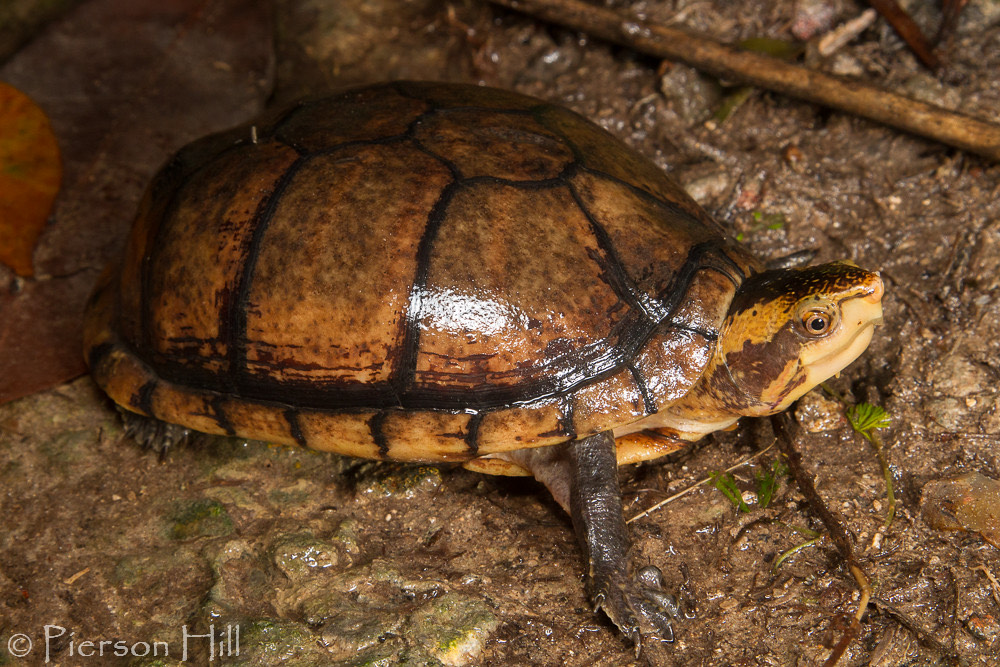
Starting with the largest of them all, the White-lipped mud turtle is endemic to both Central America and South America. Endemic means that this turtle species is native to and exclusively found in these regions, meaning it does not naturally occur anywhere else They get their name simply because their lip appears white. The scientific name also relays this; Leukos translates to white, and stoma translates to the mouth. They also have a local name, many people in Belize know them as swanca. The males often grow larger than females from this species. Besides having a white lip, they have an oval shaped shell. The carapace which is the top portion of the shell is a brown color, and the plastron which is the bottom portion of the shell is a rust color. The head of a White-lipped mud turtle is a black color with two distinctive yellowish stripes going parallel behind both eyes. They prefer to be in shallow, clear water that does not exceed one meter in depth.
Red-cheeked mud turtle

Red-cheeked mud turtles are also known as Scorpion mud turtle. They got their name because their tail looks similar to a scorpion tail. These small turtles can be found in the Yucatan, Quintana Roo and Belize. They have a pale brown or olive to black carapace and their plastron can be yellow, orange, black or gray. The color of their heads also varies in different shades of red, orange and yellow. They prefer permanent and ephemeral water bodies such as small streams, marshes and ponds. Even though these mud turtles are omnivores, they eat more animal than plant material- their diet consists of 65% animal material. One of their main predators is another turtle Staurotypus triporcatus, Northern Giant Musk Turtle.
Tabasco mud turtle
The smallest of the three, the Tabasco mud turtle or Kinsoternon acutum gets its name from having a sharp plastron. The word acuta translates to sharp plastron. The female of this species normally grows larger than the male. These turtles are similar to the white-lipped mud turtle. They have a dark brown carapace and a yellow to pale brown plastron. The head and forelimbs are patterned with red, yellow and black colorations. They prefer semi-terrestrial habitats such as ponds. Their diet is mainly earthworms, insects and snails.
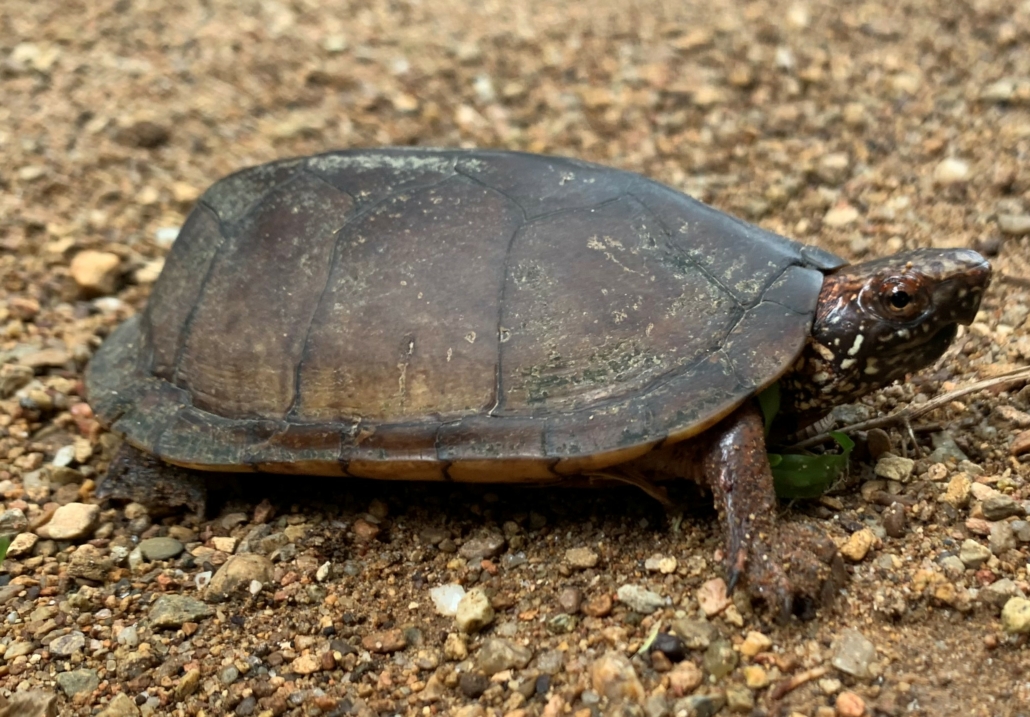
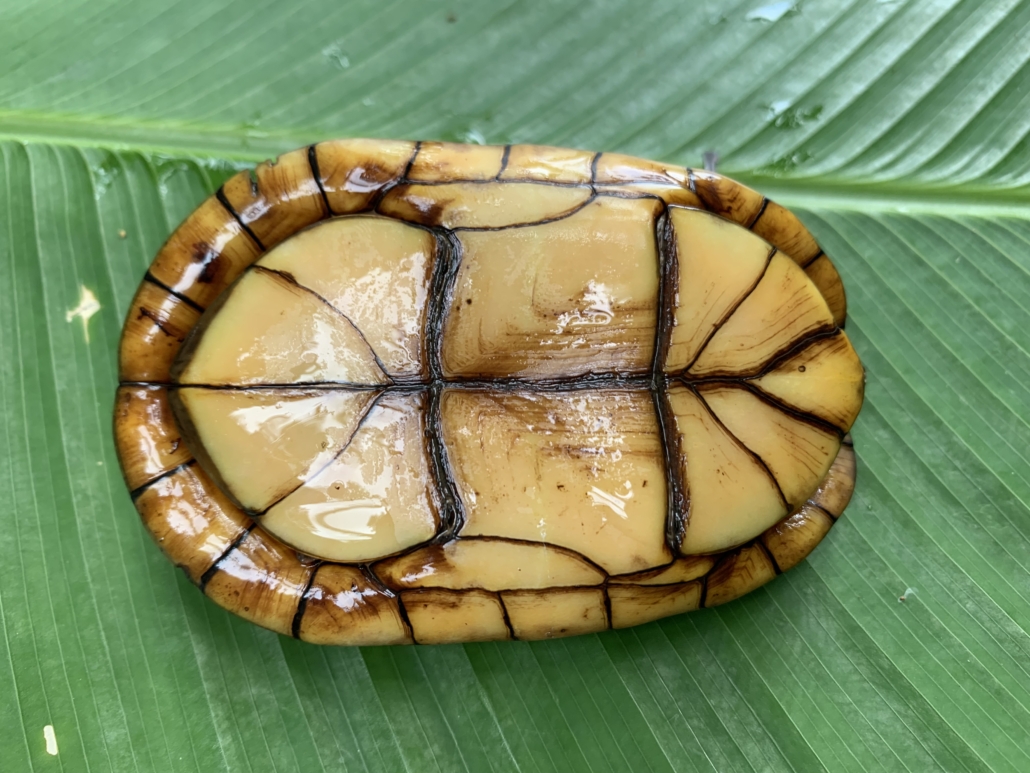
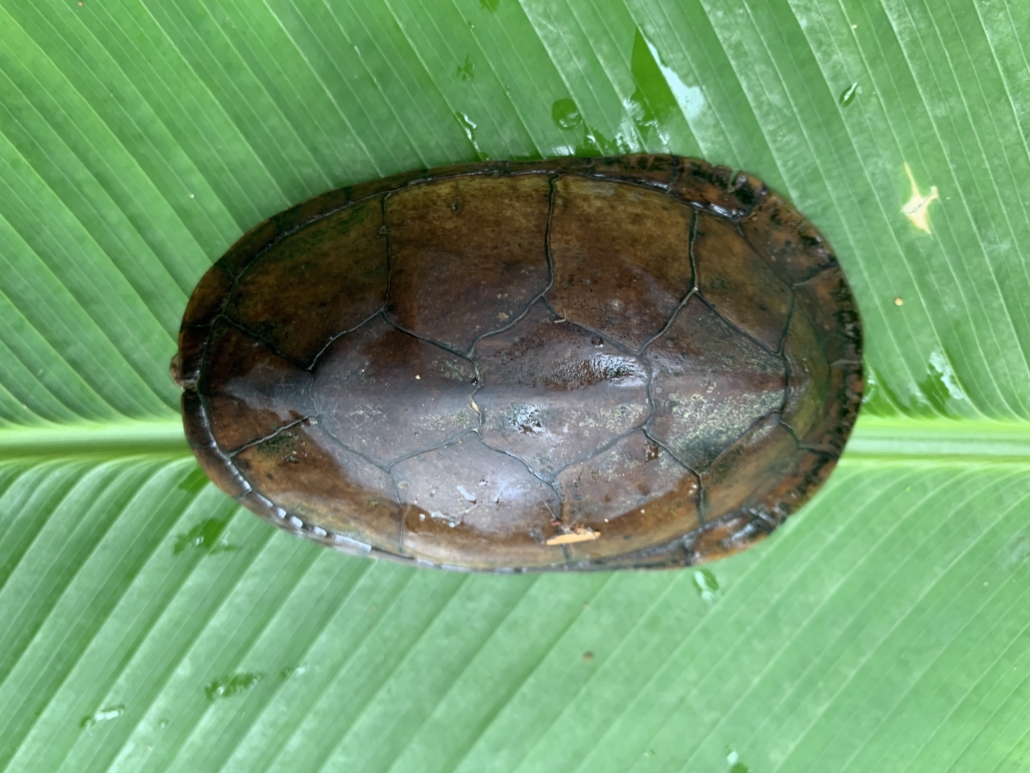
Please Respect All Turtles!
Mud turtles are cute but they don’t make good pets. Mud turtles are on the grouchy side and will bite with their curved beaks if they feel provoked or nervous. This is one of several reasons to avoid picking up or touching a mud turtle unless it’s absolutely necessary.
